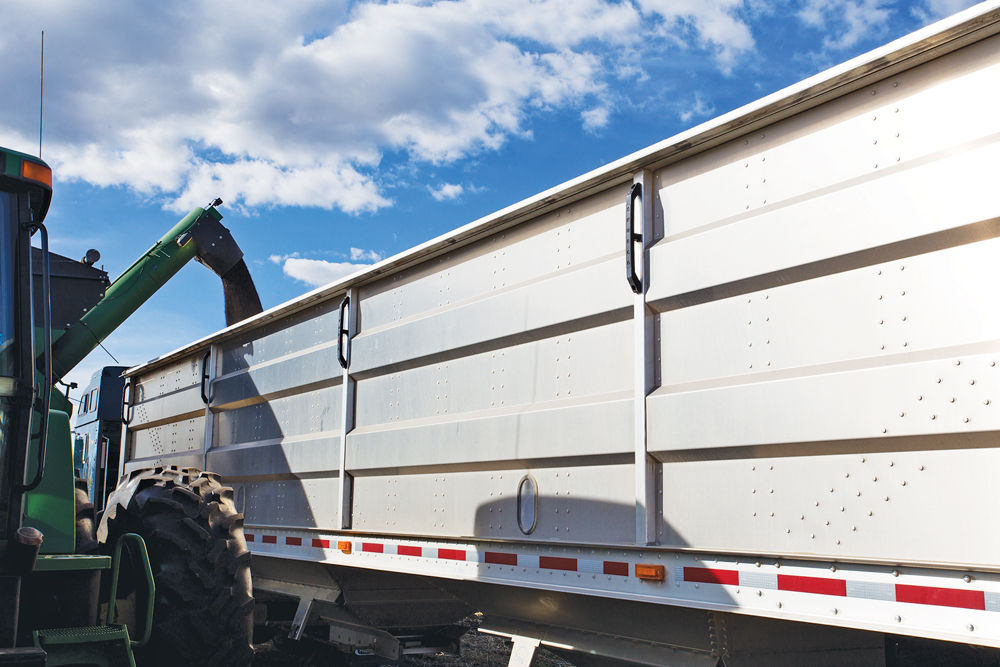Province says biomass will be a $2-billion industry by the end of the decade, but admits it doesn’t even know the current size of the sector
Biomass proponents in Manitoba say new government policies are needed if the industry is going to develop in a meaningful way, especially in the face of cheap natural gas.
“The current energy policy in this province, and it’s not Manitoba Hydro’s fault, is to get cheap energy, cheap electricity especially — that’s their mandate, that’s what they have to do,” Keystone Agricultural Producers vice-president Dan Mazier said at a recent biomass workshop at Providence College.
“For them to go into an expensive biomass program, it’s not their mandate. Government has to switch that. It’s the government’s responsibility, not Manitoba Hydro’s.”
Read Also

Manitoba sclerotinia picture mixed for 2025
Variations in weather and crop development in this year’s Manitoba canola fields make blanket sclerotinia outlooks hard to pin down
The provincial government has introduced a coal tax on industrial users, and a ban on using coal to heat space or water is due to come into effect in 2014, although Mazier noted only two large facilities in the province burn coal — a limestone operation and a Manitoba Hydro facility — and both will be exempt from the ban.
Funds from the coal levy are supposed to assist biomass industry development and encourage coal users to switch to biomass, but it can’t compete against the current low price of natural gas, said Mazier.
“Natural gas is the new coal,” he said.
KAP has lobbied the provincial government to delay the implementation of the 2014 coal ban to give consumers enough time to switch to biomass instead of natural gas — a request the province is considering.
These sorts of issues are all too familiar to Charles Lalonde of the Ontario Federation of Agriculture.
In 2008, that province was poised to convert three coal-fired electricity plants to biomass, but before the project got off the ground, it stalled and died.
“The price of natural gas really disinterested government in terms of pursuing a biomass approach,” he said. “Even at $100 a tonne, we were still 2-1/2 times more expensive than natural gas. That would have meant a subsidy to farmers to produce biomass and that wasn’t attractive either.”
Lalonde said there were also issues with technology around biomass and power generation that needed to be resolved. But even with those issues resolved, farmers need a firm price and a clear idea of how much biomass is needed before they can start production.
“Without that being in place, how do you continue proceeding?” Lalonde asked.
Exporting biomass to Europe, which has established industrial and heating markets for biomass, or developing biomass projects in northern Manitoba that currently rely on diesel, may be better bets, said Mazier.
Using biomass to make composites is gaining momentum, but still in the developmental stage, said Eric Liu, a business development specialist with Manitoba Agriculture, Food and Rural Initiatives.
The province issued a Manitoba Bio-Products Strategy in January 2011, and estimated the sector will grow to $2 billion by 2020 — although it can’t say what the size of the sector is today. In 2011, Manitoba’s largest bio-products company was Erosion Control Blankets in Riverton. With a payroll of $1 million, it represented .05 per cent of the government’s target.
Still, Agriculture Minister Ron Kostyshyn said he’s confident the province’s bio-products sector is on track to reach the $2-billion mark in the next seven years.
“We’re moving forward with it and we really think there is a real benefit in the future of the biomass component,” he said.
The rise in commodity prices has reduced the urgency to find new energy and industrial markets, but biomass still has a bright future, said Lalonde.
“We’re still looking for potential markets,” he said. “And if these materialize, there will be more stability at the farm gate.”


















